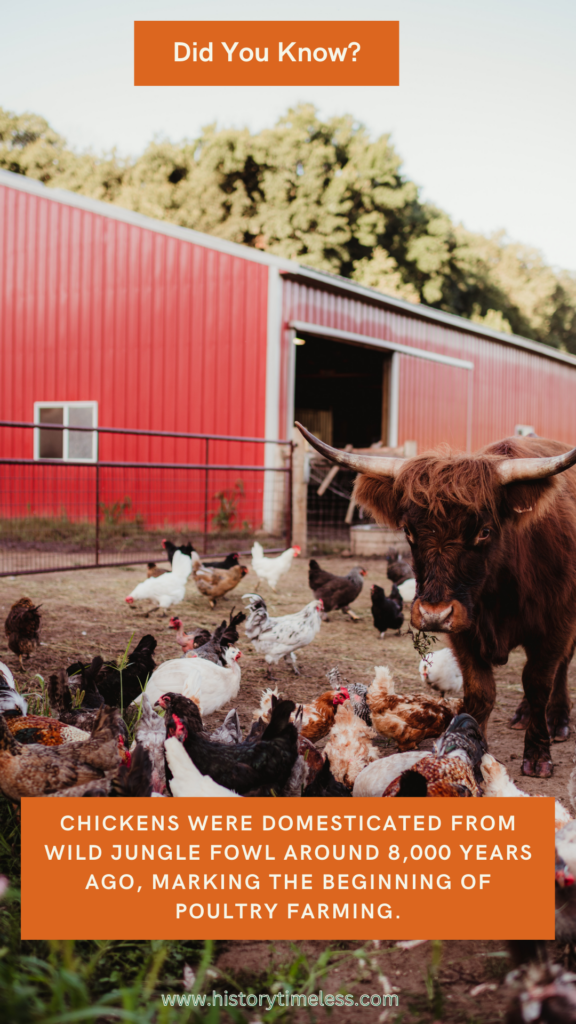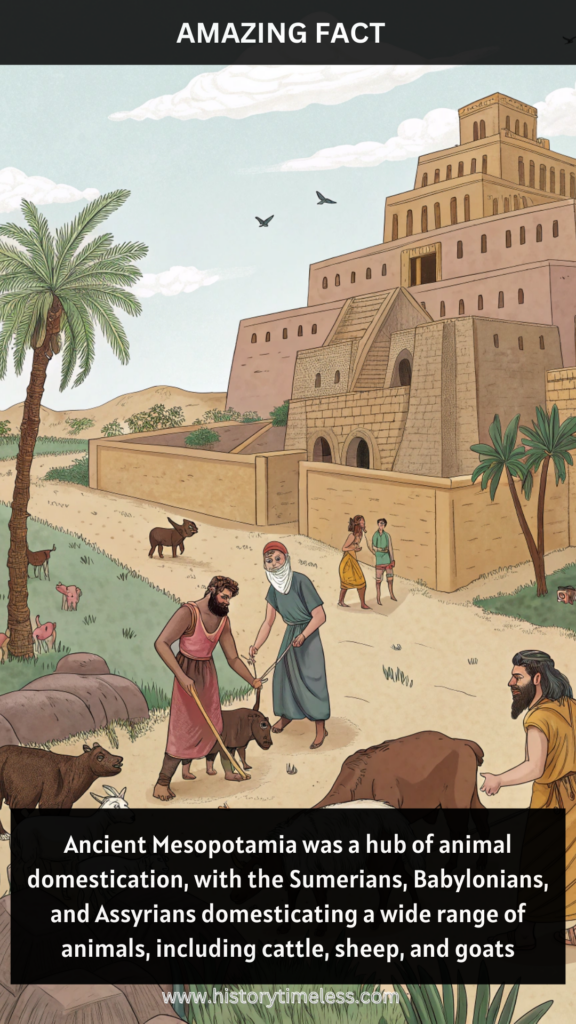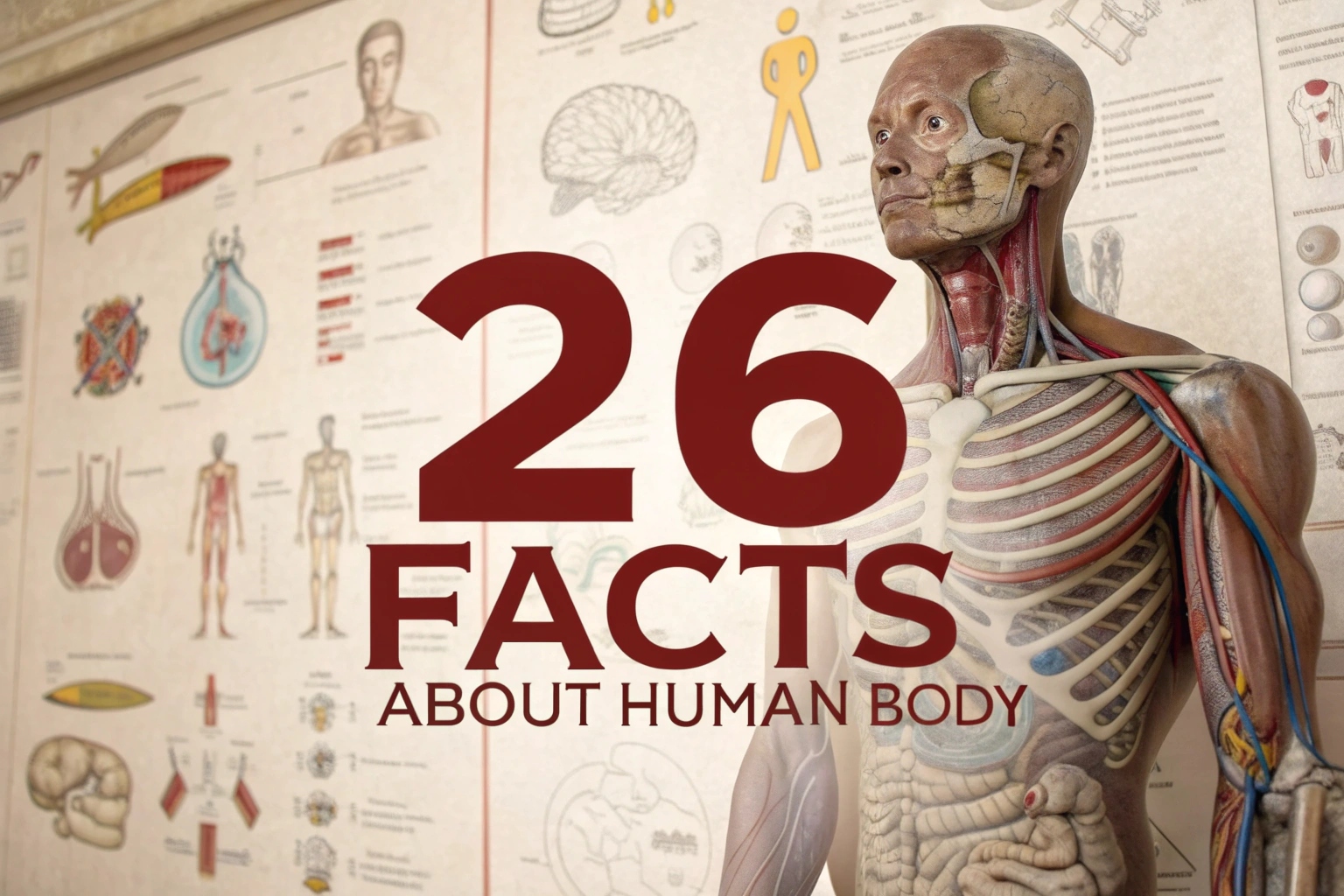Domestication is the process of taming wild animals to live alongside humans, providing companionship, assistance, and services. This complex relationship between humans and animals has been shaped over thousands of years, resulting in a wide range of domesticated species.
From dogs and cats to horses and cattle, domesticated animals have become an integral part of our lives. In this blog post, we’ll explore 25 fascinating Facts for Animal Lovers that will surprise and delight animal lovers.
1. The Role of Domesticated Animals in Human Nutrition
Domesticated animals have played a crucial role in human nutrition, providing a reliable source of protein, fat, and other essential nutrients. The domestication of animals has enabled humans to thrive in a wide range of environments, from deserts to tundras.
2. The Role of Cats in Ancient Egypt
Cats were revered in ancient Egypt for their ability to control pest populations, particularly rodents and snakes. This led to the domestication of cats, which were often mummified and buried with their owners to ensure their safe passage into the afterlife.
3. Horse Domestication and Human Migration
The domestication of horses around 6,000 years ago revolutionized human migration and trade. Horses enabled the rapid transportation of people and goods, facilitating the spread of cultures, ideas, and technologies.
4. Cattle Domestication and the Emergence of Agriculture
Cattle were domesticated around 10,000 years ago, marking the beginning of agriculture and the end of the nomadic hunter-gatherer lifestyle. Cattle provided milk, meat, and labor, allowing humans to settle in one place and cultivate crops.
5. The Domestication of Pigs and the Rise of Farming
Pigs were domesticated around 10,000 years ago, providing a valuable source of meat and fat. The domestication of pigs marked the beginning of farming as we know it today, with pigs being raised alongside other livestock.
6. Chickens and the Origins of Poultry Farming

Chickens were domesticated from wild jungle fowl around 8,000 years ago, marking the beginning of poultry farming. Chickens provided eggs, meat, and feathers, becoming a staple of many agricultural societies.
7. The Domestication of Sheep and the Development of Textiles
Sheep were domesticated around 11,000 years ago, providing a valuable source of wool, milk, and meat. The domestication of sheep marked the beginning of textile production, with wool being used to create clothing, blankets, and other essential items.
8. Goat Domestication and the Emergence of Dairy Cultures
Goats were domesticated around 10,000 years ago, providing a valuable source of milk, meat, and hair. The domestication of goats marked the beginning of dairy cultures, with goat milk being used to produce cheese, butter, and other dairy products.
9. The Domestication of Donkeys and the Development of Transportation
Donkeys were domesticated around 5,000 years ago, providing a valuable source of labor and transportation. Donkeys were used to carry goods and people, facilitating trade and communication between different regions.
10. The Domestication of Water buffalo and the Emergence of Irrigation
Water buffalo were domesticated around 5,000 years ago, providing a valuable source of milk, meat, and labor. The domestication of water buffalo marked the beginning of irrigation systems, with buffalo being used to power pumps and other agricultural equipment.
11. The Origins of Dog Domestication
Dogs were the first animals to be domesticated, with evidence suggesting that this occurred between 15,000 to 30,000 years ago. The most widely accepted theory is that dogs were domesticated from gray wolves that were attracted to human camps and settlements.
12. The Impact of Domestication on Animal Behavior
Domestication has had a significant impact on animal behavior, with domesticated animals often exhibiting unique characteristics and traits. For example, domesticated dogs have been bred to be more docile and social, while domesticated cats have been bred to be more affectionate and playful.
13. The Emergence of New Species through Domestication
Domestication has led to the emergence of new species, such as the domesticated dog, which is now recognized as a distinct species from its wild ancestor, the gray wolf. Similarly, domesticated cattle and pigs have undergone significant changes through selective breeding.
14. The Role of Genetics in Domestication
Genetics has played a crucial role in domestication, with scientists using genetic techniques to identify the genetic changes that have occurred in domesticated animals. This knowledge has enabled the development of more efficient and effective breeding programs.
15. The Impact of Domestication on the Environment
Domestication has had a significant impact on the environment, with domesticated animals often being used to manage and manipulate ecosystems. For example, domesticated sheep and cattle have been used to control vegetation and maintain grasslands.
16. The Domestication of Animals in Ancient Mesopotamia

Ancient Mesopotamia was a hub of animal domestication, with the Sumerians, Babylonians, and Assyrians domesticating a wide range of animals, including cattle, sheep, and goats. These animals played a crucial role in the development of agriculture and urbanization.
17. The Role of Domesticated Animals in Human Culture
Domesticated animals have played a significant role in human culture, with animals often being revered as symbols of power, status, and spirituality. For example, dogs have been worshipped as gods in some cultures, while cats have been revered as symbols of fertility and prosperity.
18. The Domestication of Fish and the Emergence of Aquaculture
Fish were domesticated around 2,000 years ago, marking the beginning of aquaculture. Domesticated fish have been bred for their flavor, texture, and color, with many species being farmed for human consumption.
19. The Domestication of Bees and the Emergence of Apiculture
Bees were domesticated around 4,000 years ago, marking the beginning of apiculture. Domesticated bees have been bred for their honey production, with beekeeping becoming a significant industry in many parts of the world.
20. The Role of Domesticated Animals in Therapy and Assistance
Domesticated animals have been used in therapy and assistance programs, providing emotional support, comfort, and companionship to people with disabilities and mental health conditions. For example, guide dogs have been trained to assist blind and visually impaired individuals.
21. The Domestication of Reindeer and the Emergence of Herding
Reindeer were domesticated around 3,000 years ago, marking the beginning of herding. Domesticated reindeer have been bred for their meat, milk, and hides, with herding becoming a significant industry in many parts of the world.
22. The Impact of Domestication on Animal Welfare
Domestication has raised important questions about animal welfare, with many domesticated animals being subjected to poor living conditions, cruelty, and neglect. Efforts are being made to improve animal welfare, with many organizations and individuals advocating for better treatment and care of domesticated animals.
23. The Emergence of New Breeds through Selective Breeding
Selective breeding has led to the emergence of new breeds, with many domesticated animals being bred for their unique characteristics and traits. For example, the development of miniature horses and teacup dogs has become a popular trend in recent years.
24. The Role of Technology in Modern Domestication
Technology has played a significant role in modern domestication, with advances in genetics, nutrition, and veterinary care enabling the development of more efficient and effective breeding programs. For example, artificial insemination and embryo transfer have become common practices in animal breeding.
25. The Future of Domestication and Animal-Human Relationships
The future of domestication is uncertain, with many questions being raised about the ethics and sustainability of animal domestication.
As human populations continue to grow and urbanize, the relationship between humans and animals will need to evolve, with a greater emphasis on animal welfare, sustainability, and conservation.
Delve Into More Remarkable Knowledge:
30 Shocking Atomic Bomb Facts You Need to Know!
25 Fascinating Facts About the Moon You’ll Love
Pepsi Logo History | A Captivating Visual Evolution





